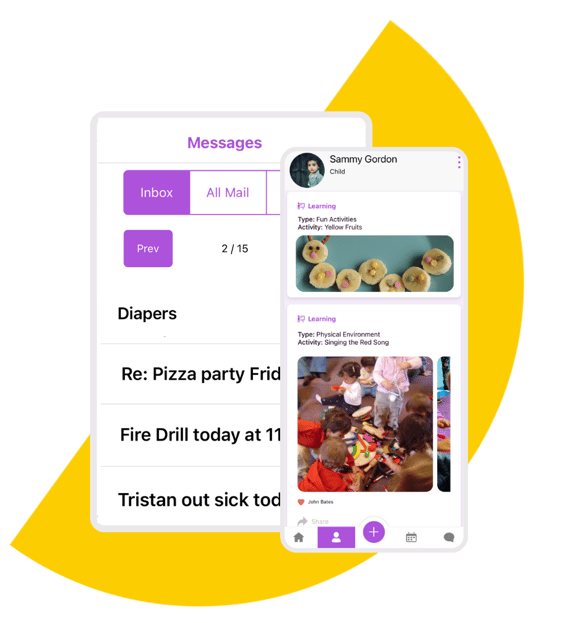When it comes to running a successful childcare business, ensuring child safety and meeting childcare compliance standards are two of the most important priorities.
Not only are they critical for the wellbeing of the children in your care, but they also protect your business from potential legal and operational risks.
A key component in managing these areas is preparing for audits and understanding how to assess and mitigate risks effectively.
In this blog, we’ll explore how a proactive approach to compliance, safety, and risk management can strengthen your childcare business and keep your operations running smoothly.
Table of Contents
-
The Importance of Self-Audits for Childcare Compliance
-
Involve Your Team in the Self-Audit Process
-
Continuous Conditioning on Child Safety Protocols
-
Prioritizing Risk Evaluation: Urgency, Probability, and Impact
-
Leverage Technology for Data-Driven Decision-Making
-
Streamlining Incident Reporting and Communication
-
Developing a Risk Mitigation Plan with Accountability
- Take Action for Safer, More Compliant Childcare Operations
The Importance of Self-Audits for Childcare Compliance
The foundation of any effective risk management plan starts with self-audits.
Cindy Morgan, Vice President of Operations at 1place Childcare, emphasizes the importance of conducting self-audits regularly using state licensing evaluation forms.
These forms provide a checklist of compliance and quality standards set by childcare licensing authorities. By using these tools to assess your business, you can quickly identify areas where you may be falling short of regulations or internal quality expectations. This process helps to pinpoint potential risks before they become serious issues.
Self-audits should be part of an ongoing effort to stay compliant with childcare licensing regulations. They offer an opportunity to stay ahead of any changes in laws or standards, ensuring that your childcare business remains in good standing with regulatory bodies.
Additionally, self-audits provide transparency and accountability, allowing you to continuously monitor your performance and improve areas that may need attention.
Involve Your Team in the Self-Audit Process
One of the most effective strategies for conducting self-audits is involving your entire team.
Cindy suggests that while leadership teams play a crucial role in managing childcare compliance, the entire staff can often spot issues that may be overlooked by higher-ups. By tapping into the collective “team genius,” you harness a wide range of perspectives, which can help uncover areas for improvement that may otherwise go unnoticed.
Involving your team also fosters a sense of ownership over compliance and safety, encouraging everyone to take responsibility for maintaining high standards.
This collaborative approach strengthens the overall culture of safety within the childcare center, ensuring that all staff members are aligned on your childcare business’s goals and responsibilities.

Continuous Conditioning on Child Safety Protocols
Meeting childcare compliance requirements isn’t a one-time effort; it requires ongoing education and reinforcement.
Cindy stresses that conditioning your team on child safety protocols should extend beyond initial onboarding training. Safety training should be an ongoing, regular process that is integrated into the daily operations of your childcare business. This can include monthly refresher courses, regular safety drills, and frequent communication regarding any updates to policies or regulations.
Integrating child safety into the everyday culture of your business ensures that staff members stay vigilant and prepared to respond to any incidents.
Plus, regular training and open discussions around child safety help maintain a high level of awareness among staff, which is critical for mitigating risks in the childcare setting.
Prioritizing Risk Evaluation: Urgency, Probability, and Impact
When evaluating risks, it’s essential to assess the urgency, probability, and potential impact of each risk. Cindy suggests this approach to help prioritize which risks need immediate attention and which can be monitored over time. For example, risks related to child safety, such as inadequate supervision or unsafe equipment, should be addressed immediately, while operational risks, such as staffing shortages, may be more easily managed with a longer-term plan.
By categorizing risks based on these factors, childcare businesses can allocate resources more effectively, ensuring that high-priority issues are dealt with first.
This strategic approach helps keep your childcare business running smoothly and minimizes the chances of compliance violations or safety incidents.
-1.png?width=454&height=454&name=Untitled%20design%20(23)-1.png)
Leverage Technology for Data-Driven Decision-Making
Technology plays an increasingly important role in helping childcare businesses manage compliance and safety. Cindy recommends using childcare software to streamline data analysis, identify trends, and support proactive decision-making.
Childcare software can automate the collection and analysis of data, allowing you to track incidents, monitor patterns in illnesses, and identify areas where additional resources may be needed.
For instance, analyzing incident reports over time can reveal patterns related to specific classrooms, times of year, or particular activities that might require more focused attention.
By leveraging technology to monitor and assess trends, you can make data-driven decisions that improve the overall safety and quality of care at your childcare business.
Streamlining Incident Reporting and Communication
Incident reporting is a critical aspect of child safety. Cindy advocates for integrating incident reporting systems with other tools, such as LineLeader, to reduce the need for manual data entry and streamline communication.
When incident reports are automated and integrated with other systems, staff can quickly communicate any safety concerns, and incidents can be tracked and addressed more efficiently.
This system not only saves time but also helps ensure that all relevant parties, including parents, are kept informed about any incidents involving their child. Timely communication and clear documentation of incidents can also help demonstrate compliance with safety protocols and regulatory requirements.

Developing a Risk Mitigation Plan with Accountability
Finally, Cindy underscores the importance of having a clear, actionable plan for each identified risk. For each risk, your childcare business should assign clear ownership and accountability for mitigation strategies. Whether it’s a safety protocol, compliance task, or operational issue, having someone responsible for addressing the problem ensures that it is dealt with promptly and effectively.
A well-documented risk mitigation plan helps ensure that your childcare business is prepared for any potential challenges. It also provides a roadmap for addressing issues proactively, reducing the likelihood of incidents that could impact the safety of the children in your care or the reputation of your business.
Take Action for Safer, More Compliant Childcare Operations
Childcare compliance and child safety should always be top priorities for any childcare business. By regularly conducting self-audits, involving your team, using technology to support data-driven decisions, and developing clear risk mitigation plans, you can create a safe and compliant environment that benefits both the children in your care and your business operations.
With ongoing education and a commitment to continuous improvement, your childcare business can stay ahead of potential risks, ensuring a safe and supportive environment for all.
If you're interested in learning more about best practices for compliance, safety, and risk management in childcare, watch the recording of our recent webinar. We dive deeper into these strategies and provide actionable insights that you can apply directly to your childcare business.

-9.png?width=352&name=Copy%20of%20Featured%20Blog%20Photo%20Templates%20(840%20%C3%97%20550%20px)-9.png)

.png?width=352&name=featured%20images%20for%20blog%20(4).png)
